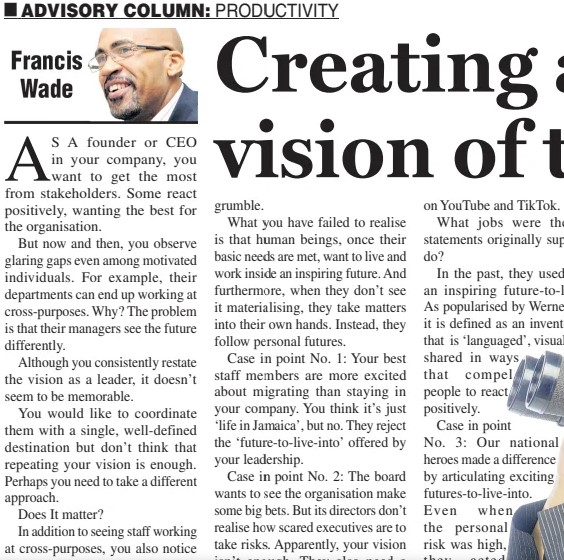As a Founder/CEO, maximizing stakeholder engagement is crucial for your company’s success. Some stakeholders enthusiastically support the organization, yet you occasionally notice significant discrepancies among motivated individuals. Why? Their departments may inadvertently work against each other due to differing managerial perspectives regarding the future.
Despite consistently communicating your vision as a leader, it doesn’t seem to stick in their minds. Merely reiterating the vision doesn’t seem sufficient to align them effectively.
Does It Matter?
Beyond observing conflicting efforts, you also witness some employees lacking motivation, eventually choosing to leave. Despite regular pay and a strong company track record, some individuals express disinterest or discontent.
What’s been overlooked is that once basic needs are met, people seek an inspiring future in their work lives. When this future isn’t evident, they begin creating their own paths, separate from the company’s vision.
For instance, your top employees seem more excited about leaving than remaining with your company. It’s not just a “local life in this town” issue; they’re rejecting the future you’ve presented to them.
Moreover, while the board urges bold moves, the executives fear taking risks, indicating that your vision alone isn’t compelling enough. They crave a more tangible, engaging “future-to-live-into”.
What is a “Future-to-Live-Into”?
Your organization might have a vision statement, but if it’s stale or lacks specificity, it won’t resonate. Staff members today seek more engaging content beyond traditional vision statements.
What’s the Purpose?
Vision statements once offered an inspiring future-to-live-into. Coined by Werner Erhard, it’s a compelling, verbalized future that motivates people to act positively.
How to Harness This Power?
Merely hosting meetings won’t displace default futures. However, there are design principles to follow, like creating a comprehensive, dated, and inspiring endpoint that surpasses previous visions.
Design Rule: A Clear, Time-Bound, Inspiring Vision
To move beyond the CEO’s vision or generic statements, stakeholders desire explicit inspiration and meaning. Crafting a fresh, collective future-to-live-into involves summarizing relevant facts, acknowledging past successes and failures, and identifying unavoidable trends.
Setting a target year anchors ideas within a specific timeframe. Next, articulate a compelling vision with BHAGs, ensuring it’s inspiring enough.
But don’t stop there. Stakeholders seek a credible strategic plan backing these aspirations, providing detail to validate the concept and unify the team.
In the end, a cohesive, fresh future-to-live-into emerges, inspiring the team and replacing their default futures. You’ll have cultivated a cause worth championing, not just a job offering a paycheck.

